- Preparing the Soil
- 1. Choose the Right Location
- 2. Clear the Area
- 3. Test the Soil
- 4. Improve Drainage
- 5. Loosen the Soil
- 6. Remove Large Stones
- 7. Level and Rake the Soil
- Loosening the Soil
- Removing Weeds
- Sowing the Seeds
- Choosing the Right Time
- Sowing the Seeds
- Watering and Fertilizing
- Watering
- Fertilizing
- Watering the Plants
- Applying Fertilizer
- Managing Pests and Diseases
- Pests
- Diseases
- Q&A:
- What is horseradish?
- Can horseradish be grown from seeds?
- How long does it take for horseradish to grow from seeds?
- What are the ideal growing conditions for horseradish?
- Can horseradish be grown in containers?
- Video: How to Sprout EASILY for 25 Cents a Day! Jar Growing Method for Beginners…
Growing your own horseradish from seeds can be a rewarding and flavorful experience. As a member of the mustard family, horseradish is known for its pungent and spicy flavor that adds a kick to a variety of dishes. Whether you want to enhance your homemade sauces or enjoy fresh horseradish with your favorite steak, growing it in your vegetable garden allows you to have a constant supply right at your fingertips.
Before you start growing horseradish from seeds, it’s important to choose the right planting spot. Horseradish prefers a sunny location with well-drained soil. It’s a good idea to amend the soil with organic matter, such as compost or aged manure, to improve its fertility and drainage.
To start growing horseradish, sow the seeds into prepared soil in early spring, about 1/4 inch deep. Make sure to space the seeds 12 to 18 inches apart to allow room for the plants to grow. Keep the soil consistently moist until the seeds germinate, which usually takes around 2-3 weeks.
Once the horseradish plants have grown a few inches tall, thin them out to about 6-8 inches apart. This will allow the remaining plants to develop a strong root system. As the plants continue to grow, make sure to keep the soil evenly moist and weed-free. You can also apply a layer of mulch around the plants to help conserve moisture and suppress weeds.
After about 6-8 months of growth, the horseradish roots will be ready to harvest. Carefully dig up the plants, being cautious not to damage the roots. Wash the roots thoroughly and peel off the outer skin. Grate or chop the horseradish roots and mix with vinegar to create a spicy and flavorful condiment.
Preparing the Soil
Before planting horseradish seeds in your vegetable garden, it is essential to prepare the soil to provide the best growing conditions for the plant. Follow these steps to ensure your horseradish thrives:
1. Choose the Right Location
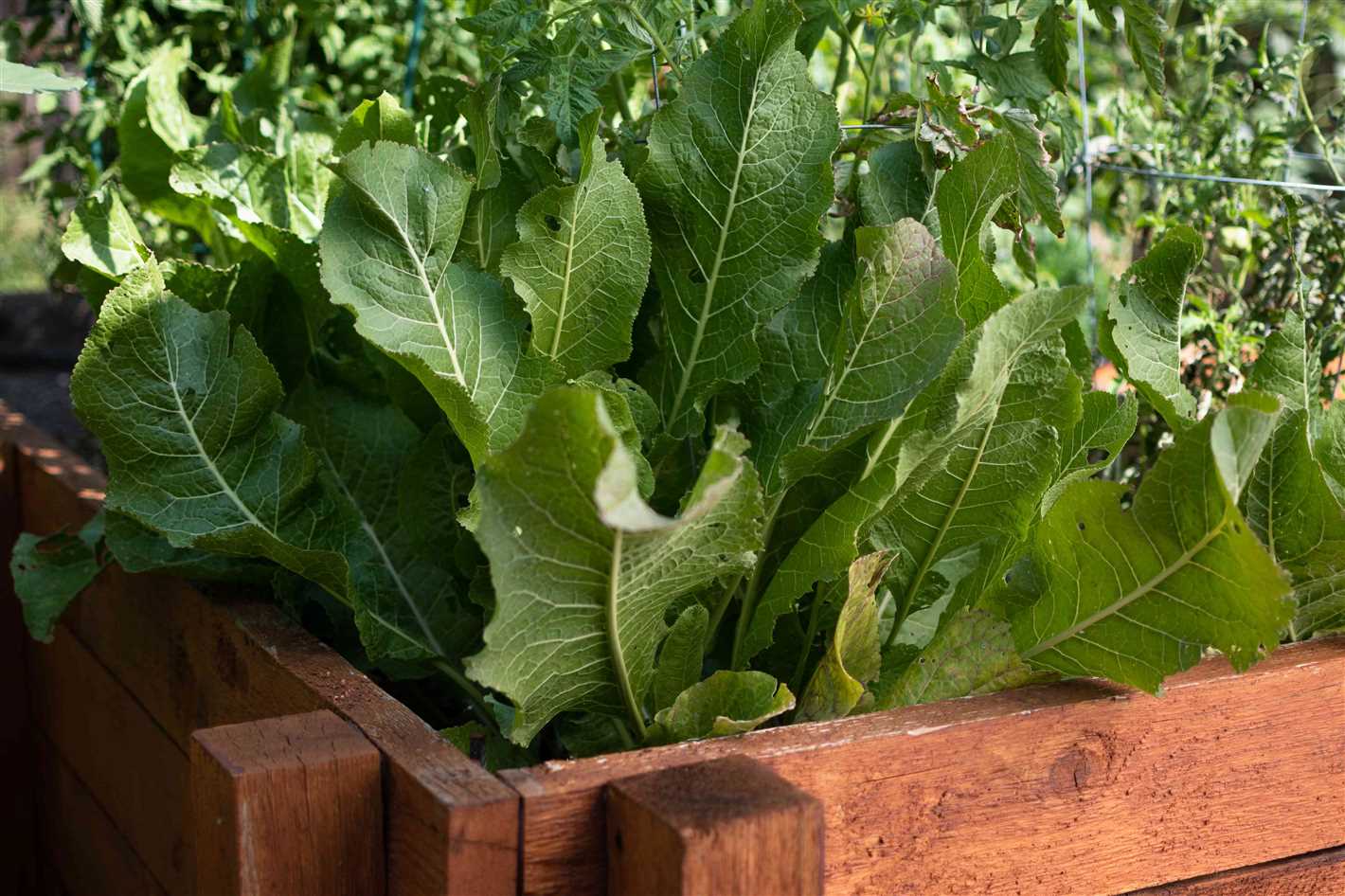
Horseradish prefers full sun but can tolerate partial shade. Select a spot in your garden that receives at least six hours of direct sunlight each day. Ensure the area is well-draining to prevent waterlogging, which can lead to root rot.
2. Clear the Area
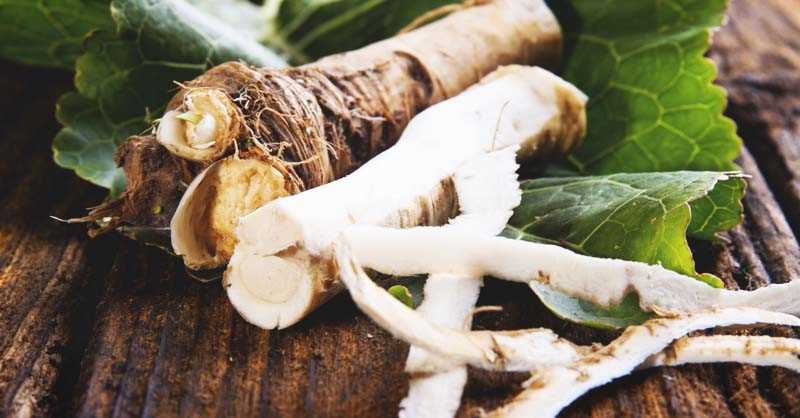
Remove any weeds, rocks, or debris from the planting site. Horseradish has deep roots, so it is crucial to clear the area thoroughly to prevent any obstructions.
3. Test the Soil
Use a soil testing kit to determine the pH level of your soil. Horseradish thrives in slightly acidic soil with a pH range of 6.0 to 7.5. If your soil is too alkaline, you can amend it with organic matter or sulfur to lower the pH.
4. Improve Drainage
If your soil has heavy clay texture, it may not drain well. To improve drainage, add organic matter such as compost, well-rotted manure, or peat moss to the soil. These amendments will help break up the clay and enhance water infiltration.
5. Loosen the Soil
Using a garden fork or tiller, loosen the soil to a depth of at least 12 inches. This will create a loose and friable bed for the horseradish roots to penetrate easily.
6. Remove Large Stones
Scan the soil for any large stones or rocks that may obstruct root growth. Remove them from the planting area to ensure the horseradish roots have space to develop properly.
7. Level and Rake the Soil
Once the soil has been loosened and any obstructions removed, level the area with a garden rake. This will create a smooth surface for planting and improve the overall appearance of your vegetable garden.
By following these steps to prepare the soil, you will create the ideal growing conditions for your horseradish seeds in your vegetable garden. This will ensure a successful and bountiful harvest of this flavorful and versatile root vegetable.
Loosening the Soil
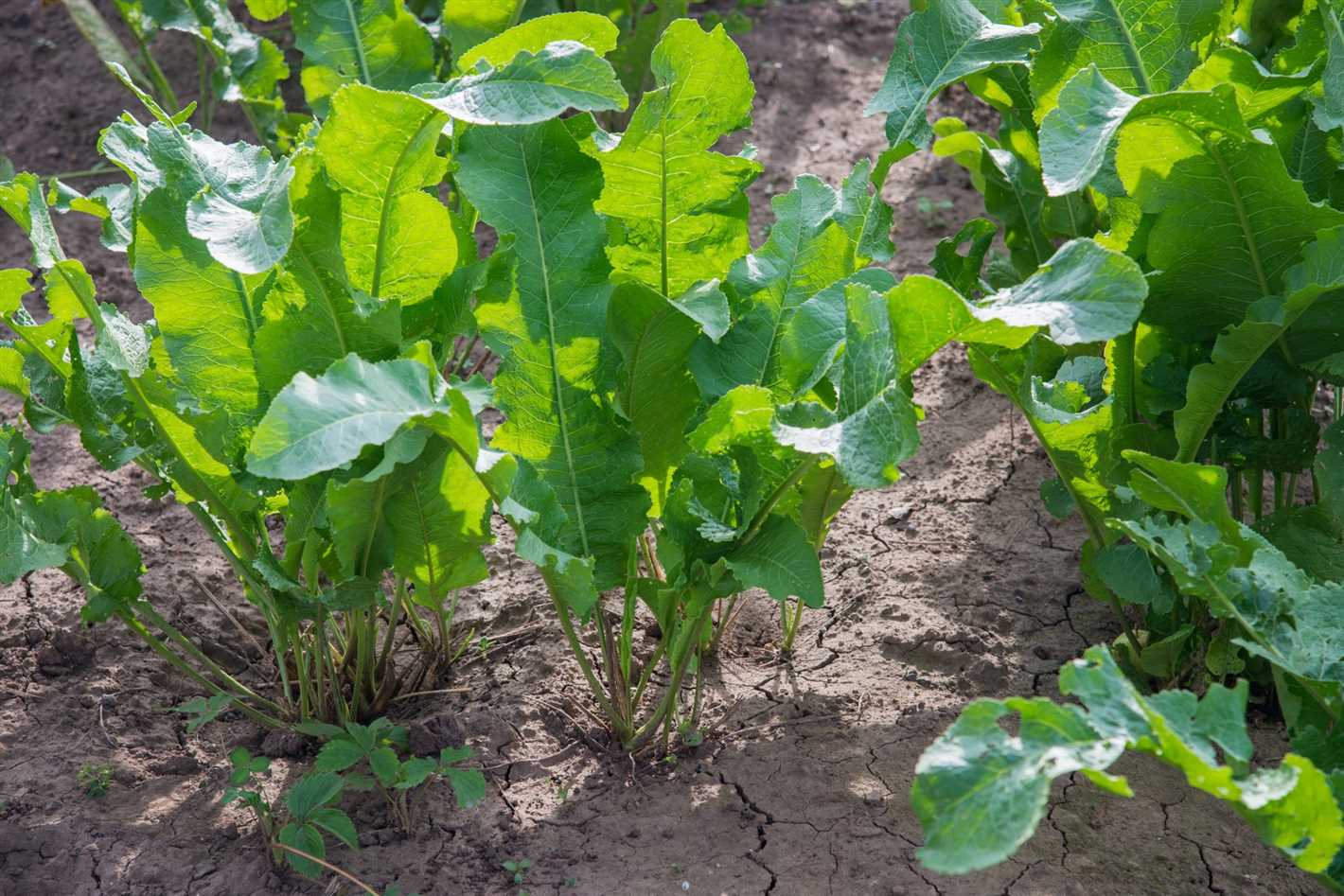
Before planting horseradish seeds in your vegetable garden, it is important to prepare the soil properly. Horseradish thrives in well-drained soil that is loose and rich in organic matter. Follow these steps to loosen the soil:
- Clear the area: Remove any existing plants, weeds, or debris from the area where you plan to grow horseradish. This ensures that the plants have enough space to grow and reduces competition for nutrients.
- Till the soil: Use a garden tiller or a spade to loosen the soil to a depth of about 12 inches. This helps break up any compacted soil and improves drainage. Remove any large rocks or roots that you encounter during the process.
- Add organic matter: Incorporate well-rotted compost or aged manure into the soil to increase its fertility. Spread a layer of organic matter over the tilled area and mix it into the soil using a rake or a garden fork.
- Level the soil: Use a rake to level the soil and create a smooth surface for planting. This reduces the risk of water pooling and helps ensure that the seeds are sown at a consistent depth.
By loosening the soil and improving its quality, you provide an ideal environment for horseradish seeds to germinate and grow into healthy plants. Remember to water the soil thoroughly after planting to promote seed germination and establishment.
Removing Weeds
Once your horseradish plants have grown, it is important to keep the area free from weeds. Weeds can compete with the horseradish for nutrients and water, and can also attract pests. Here are some tips for effectively removing weeds from your horseradish garden:
- Regular maintenance: Make it a habit to check your horseradish garden for weeds on a regular basis. This will help prevent them from spreading and taking over.
- Hand-pulling: One of the most effective ways to remove weeds is by hand-pulling. Use a pair of gloves to protect your hands and simply grasp the weed at the base and pull it out, making sure to remove the entire root system.
- Use a hoe: For larger areas with a lot of weeds, you can use a hoe to remove them. Gently scrape the surface of the soil in between the rows of horseradish plants, being careful not to damage the roots of the horseradish plants.
- Mulch: Applying a layer of mulch around your horseradish plants can help suppress weed growth. Mulch acts as a barrier, preventing sunlight from reaching weed seeds and hindering their germination.
- Avoid using herbicides: While herbicides can be effective in killing weeds, they can also harm your horseradish plants. It is best to avoid using herbicides in your vegetable garden to protect the health of your horseradish.
By regularly removing weeds from your horseradish garden, you can ensure that your plants have the best chance of thriving and producing a bountiful harvest.
Sowing the Seeds
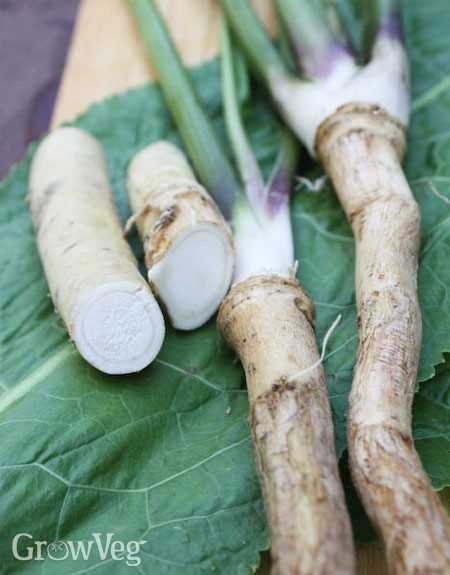
Once you have prepared your gardening area and gathered your horseradish seeds, it is time to start sowing. Follow these steps to successfully sow horseradish seeds in your vegetable garden:
- Prepare the soil: Before sowing the seeds, make sure the soil is well-drained and has a pH level between 6.0 and 7.5. Remove any weeds and debris from the area.
- Sow the seeds: Scatter the horseradish seeds evenly over the prepared soil. You can sow them directly outdoors, as horseradish seeds do not transplant well.
- Lightly cover the seeds: Gently rake the soil to lightly cover the horseradish seeds with about a quarter-inch layer of soil. Be careful not to bury the seeds too deeply, as they need light to germinate.
- Water the area: After sowing the seeds, water the area thoroughly to ensure the soil is evenly moist.
- Maintain consistent moisture: Continue to water the area regularly to keep the soil consistently moist throughout the germination process. Avoid overwatering, as this can cause the seeds to rot.
Remember to label the area where you have sown the horseradish seeds, so you can easily identify them as they grow.
Choosing the Right Time
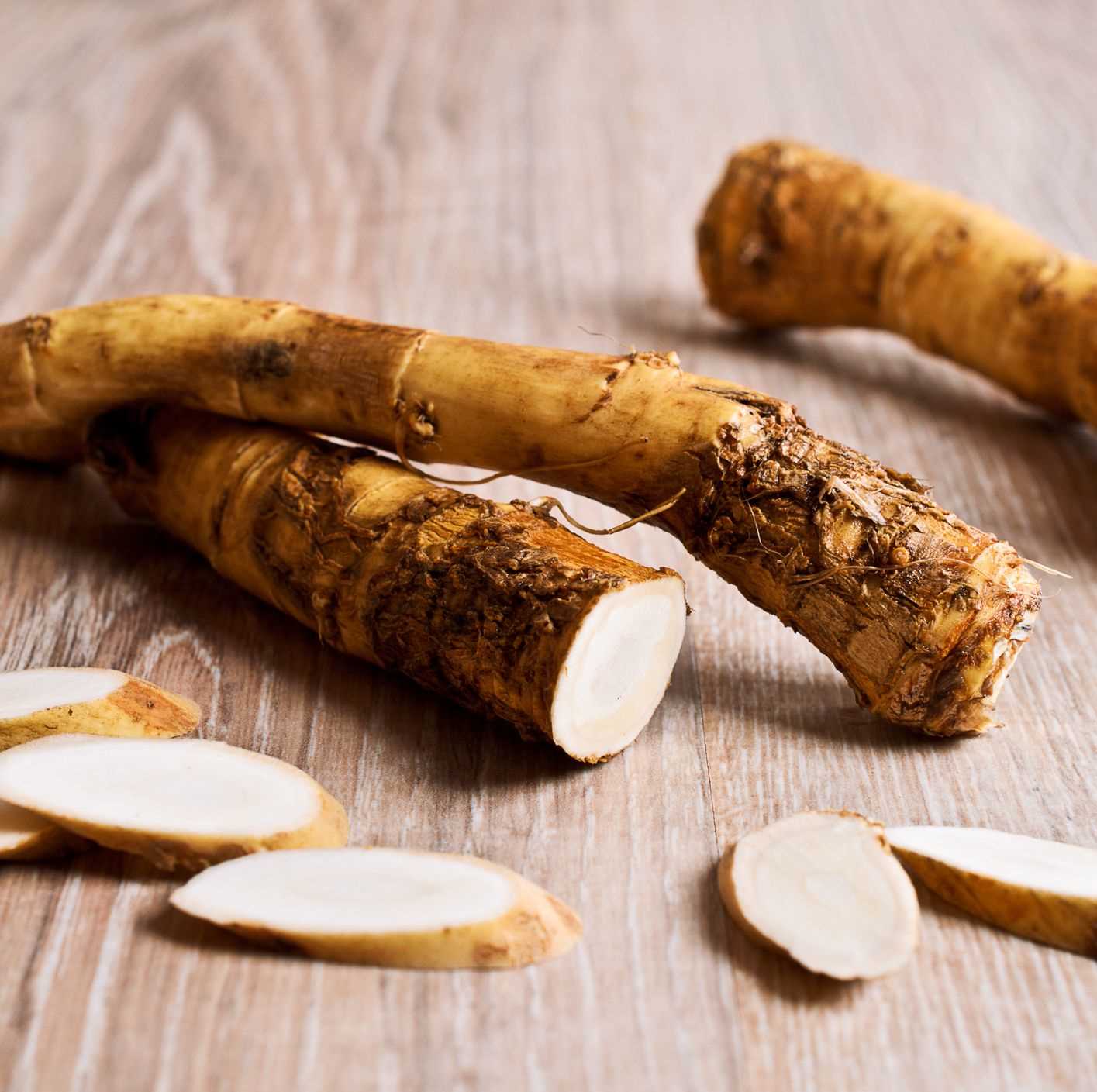
When it comes to growing horseradish from seeds in your vegetable garden, choosing the right time to plant is crucial. Since horseradish is a cold-hardy plant, it is recommended to sow the seeds in early spring or late fall, depending on your climate.
If you live in a region with harsh winters, it is best to plant horseradish seeds in the early spring, after the last frost has passed. This will give the plants enough time to establish before the hot summer months arrive. On the other hand, if you live in a milder climate, you can also plant horseradish seeds in the late fall. The colder temperatures will help to stimulate the seed germination process.
Before planting, make sure to prepare the soil by removing any weeds or grass and loosening it with a garden fork or tiller. Horseradish prefers well-drained soil with a pH level between 6.0 and 7.5. If your soil is too acidic, you can add lime to raise the pH level.
Since horseradish is a perennial plant, it is important to choose a location in your vegetable garden where it will have enough space to grow and spread. Make sure to select a spot that receives full sunlight, as horseradish thrives in bright, direct light.
Sowing the Seeds
Before sowing horseradish seeds, it’s important to choose a suitable location in your vegetable garden. Horseradish plants prefer full sun, so select an area that receives at least 6-8 hours of direct sunlight per day. The soil should be well-draining and rich in organic matter.
Once you have chosen the perfect spot, prepare the soil by removing any weeds and other debris. Use a garden fork or tiller to loosen the soil to a depth of at least 8-10 inches. Add compost or well-rotted manure to improve the soil’s fertility and moisture-holding capabilities.
After preparing the soil, it’s time to sow the horseradish seeds. Start by creating furrows or rows in the soil, spaced about 12-18 inches apart. The furrows should be around 1 inch deep.
Place the horseradish seeds in the furrows, spacing them about 2-3 inches apart. Cover the seeds with soil and gently firm it down using your hands or the back of a rake. Water the area thoroughly to ensure good seed-to-soil contact and help the seeds germinate.
Keep the soil moist but not overly saturated during the germination process. The seeds should begin to sprout within 10-14 days, depending on the soil temperature and moisture levels.
It’s important to thin out the horseradish seedlings once they have developed their first set of true leaves. Thin them to about 6-8 inches apart to allow enough space for each plant to grow and develop. Use scissors or garden shears to carefully remove the excess seedlings, taking care not to disturb the roots of the remaining plants.
Continue to water the horseradish plants regularly, providing about 1 inch of water per week. Monitor the soil moisture levels and adjust the watering schedule as needed.
With proper care and maintenance, your horseradish plants will continue to grow and develop. In the next section, we will discuss how to care for the growing horseradish plants to ensure a bountiful harvest.
Watering and Fertilizing
Horseradish plants require consistent moisture to thrive, especially during hot and dry weather conditions. Here are some tips for watering and fertilizing your horseradish plants:
Watering
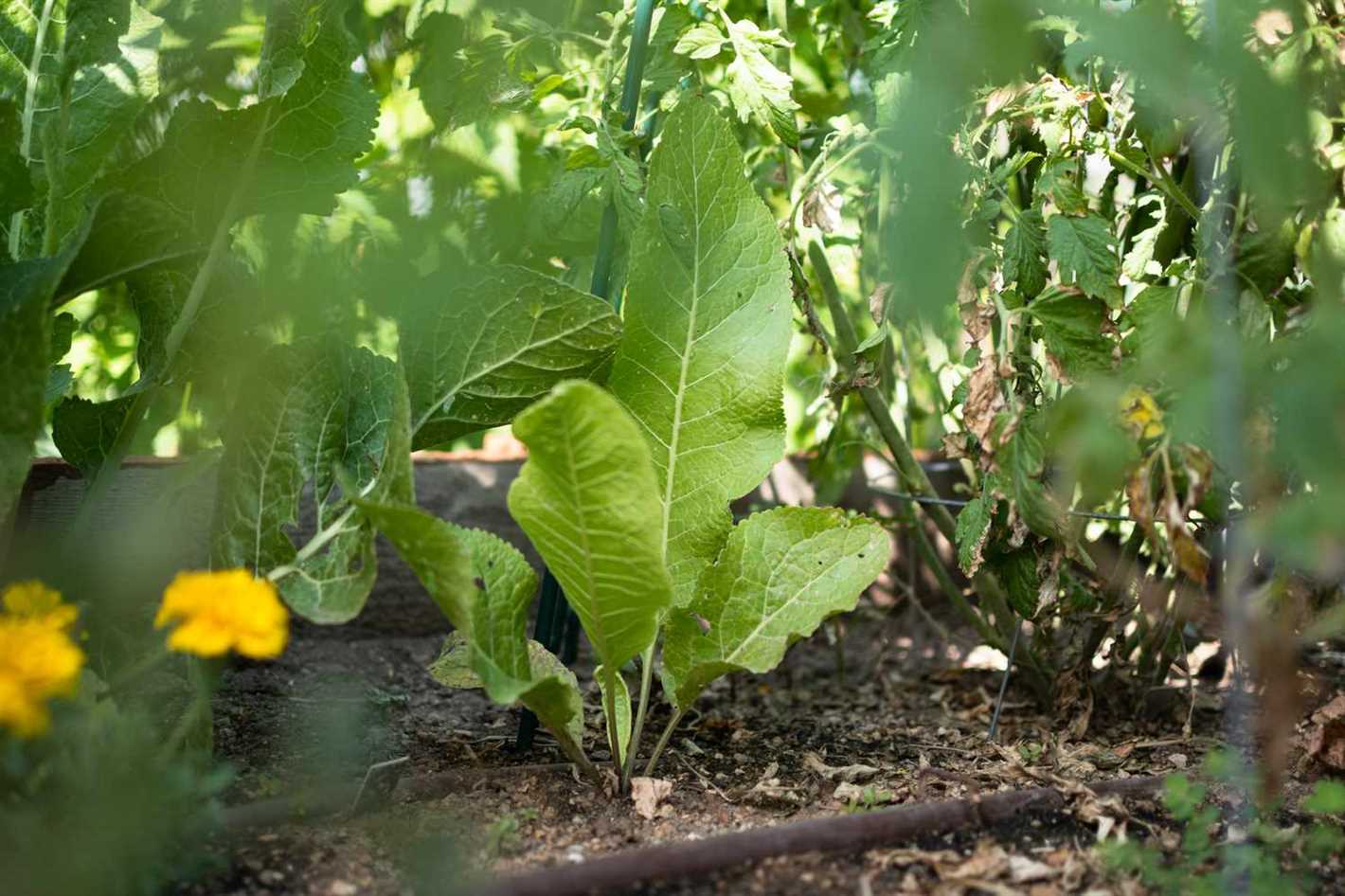
- Water your horseradish plants deeply at least once a week, ensuring that the soil is thoroughly soaked.
- Check the soil moisture level regularly by sticking your finger into the ground. If the top inch of soil feels dry, it is time to water.
- Avoid overwatering, as this can lead to root rot and other issues. Adequate drainage is essential for horseradish plants.
- Mulching around the plants can help retain moisture and control weed growth.
Fertilizing
- Before planting horseradish seeds, incorporate well-rotted organic matter, such as compost or aged manure, into the soil to improve fertility.
- Apply a balanced fertilizer, such as 10-10-10, around the base of the plants once they have established and started to grow.
- Follow the manufacturer’s instructions for the appropriate amount of fertilizer to use.
- Reapply fertilizer every 4-6 weeks during the growing season to provide the necessary nutrients for healthy plant growth.
- Avoid excessive fertilization, as it can lead to lush foliage growth at the expense of root development.
By providing adequate moisture and nutrients, you can ensure the successful growth of your horseradish plants. Remember to monitor the soil moisture and adjust your watering schedule accordingly. Regular fertilization will support their growth and development throughout the growing season.
Watering the Plants
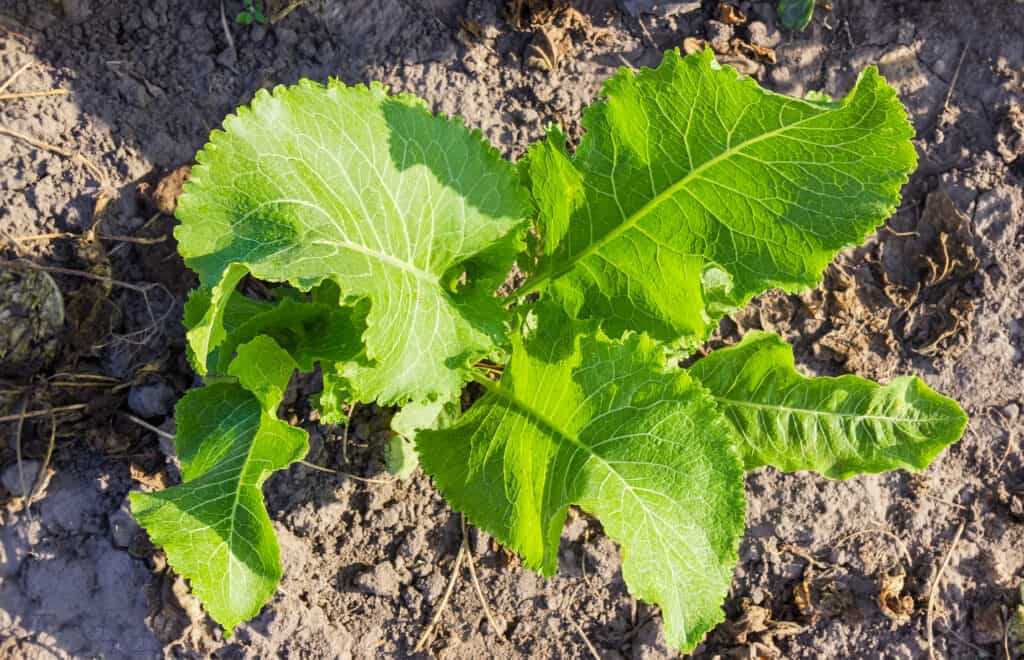
Watering is a crucial aspect of growing horseradish plants from seeds. Adequate and consistent watering helps in the proper growth and development of the plants. Here are some important points to keep in mind regarding watering:
- Frequent Watering: Horseradish plants require regular watering, especially during dry spells. The soil should be kept consistently moist but not waterlogged.
- Deep Watering: When watering, it’s important to ensure that the water penetrates deeply into the soil. Shallow watering can lead to shallow root growth, which can make the plant susceptible to drought stress.
- Early Morning Watering: It’s best to water horseradish plants early in the morning. This allows the foliage to dry out during the day, reducing the risk of fungal diseases.
- Avoid Watering the Foliage: When watering, try to focus on the soil around the plant’s base. Wetting the foliage excessively can promote the growth of diseases.
- Consistent Moisture: Horseradish plants prefer consistently moist soil. If the soil becomes too dry between watering, it can negatively affect the plants’ growth. Mulching can help to retain moisture in the soil.
- Monitor Soil Moisture: Regularly check the soil moisture levels by inserting your finger about an inch into the soil. If it feels dry at that depth, it’s time to water the plants.
By following these watering practices, you can ensure that your horseradish plants receive adequate moisture for healthy growth.
Applying Fertilizer
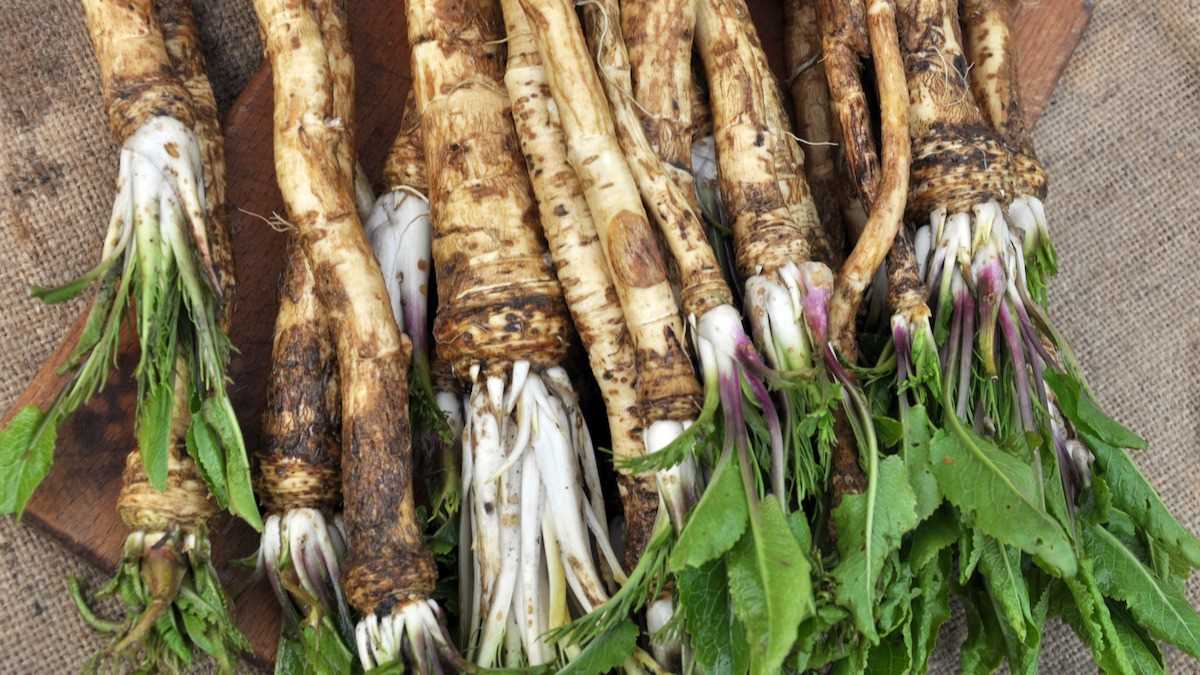
Fertilizing your horseradish plants is an essential part of their growth and development. By providing the right nutrients, you can ensure healthy foliage and a bountiful harvest. Here are some tips on applying fertilizer to your horseradish plants:
- Choose the right fertilizer: Horseradish plants benefit from a balanced fertilizer with a ratio of nitrogen, phosphorus, and potassium (N-P-K). Look for a fertilizer with a ratio of 10-10-10 or similar.
- Apply at the right time: Start fertilizing your horseradish plants when they are about 4-6 inches tall. Apply the first round of fertilizer in early spring before new growth starts.
- Follow the package instructions: Read the instructions on the fertilizer package carefully to determine the recommended amount for horseradish plants. Different fertilizers may have different application rates.
- Spread the fertilizer evenly: Use a garden fork or a hoe to loosen the top layer of soil around the horseradish plants. Sprinkle the fertilizer evenly over the soil, ensuring that it is spread around the plant’s root zone.
- Water after applying: After applying the fertilizer, water the plants thoroughly to help the nutrients penetrate the soil and reach the plant’s roots.
- Repeat throughout the growing season: Fertilize your horseradish plants every 4-6 weeks throughout the growing season. This will provide a steady supply of nutrients to support healthy growth.
- Monitor plant health: Keep an eye on your horseradish plants and monitor their overall health. If you notice any signs of nutrient deficiencies or excessive growth, adjust your fertilization schedule accordingly.
Remember, fertilizers are not a substitute for proper soil preparation and watering. It’s important to provide your horseradish plants with well-draining soil, adequate moisture, and proper sunlight along with regular fertilization for optimal growth.
Managing Pests and Diseases
Pests
- Aphids: Aphids can be a common pest for horseradish plants. To control aphids, you can use insecticidal soap or neem oil. Spray the affected plants thoroughly to eliminate the aphids.
- Cabbage worms: Cabbage worms can also attack horseradish plants. Handpicking the worms off the plants is a natural way to control them. You can also use row covers to prevent the worms from laying eggs on the plants.
- Slugs and snails: Slugs and snails can cause damage to horseradish leaves. Use organic slug pellets or set up beer traps to catch and control these pests.
- Root maggots: Root maggots can attack horseradish roots and cause significant damage. To control them, you can use yellow sticky traps or apply beneficial nematodes to the soil.
Diseases
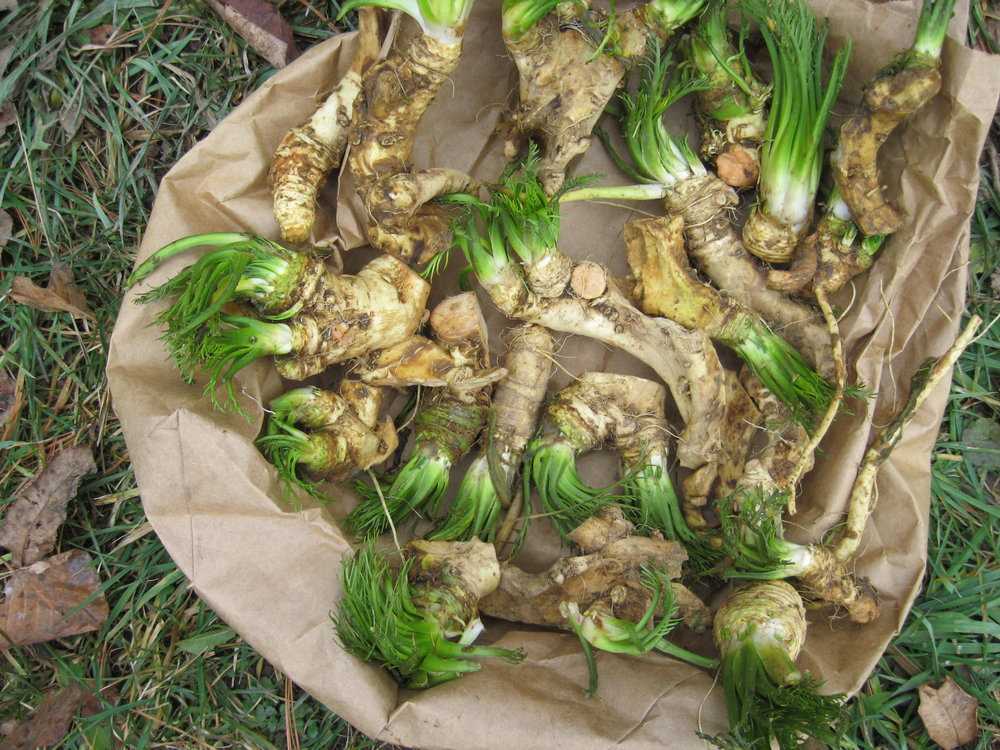
- Clubroot: Clubroot is a fungal disease that affects the roots of the horseradish plant. To manage clubroot, ensure you have well-drained soil and avoid planting horseradish in areas with a history of clubroot. Additionally, practice crop rotation to prevent the spread of the disease.
- Downy mildew: Downy mildew can cause yellow spots on the leaves of horseradish plants. To prevent downy mildew, provide proper air circulation by spacing out the plants. Remove and destroy infected leaves to prevent the spread of the disease.
- White rust: White rust is a fungal disease that causes white pustules on the leaves of horseradish plants. To manage white rust, remove and destroy infected leaves and practice good sanitation in your garden.
Regularly inspect your horseradish plants for signs of pests or diseases, and take appropriate action to prevent their spread. Maintaining good garden hygiene and providing optimal growing conditions can help keep your horseradish plants healthy and productive.
Q&A:
What is horseradish?
Horseradish is a plant that belongs to the Brassicaceae family. It is known for its pungent and spicy flavor, and is commonly used as a condiment or seasoning in various dishes.
Can horseradish be grown from seeds?
Yes, horseradish can be grown from seeds. However, it is more commonly propagated using root cuttings, as it can be difficult to grow from seeds.
How long does it take for horseradish to grow from seeds?
Horseradish typically takes about 2-3 years to mature when grown from seeds. This is why it is more commonly propagated using root cuttings, as it allows for faster and more reliable results.
What are the ideal growing conditions for horseradish?
Horseradish thrives in full sun and well-drained soil. It prefers a pH level between 6.0 and 7.5. Additionally, it is a hardy plant that can tolerate a wide range of temperatures, but it does best in cooler climates.
Can horseradish be grown in containers?
Yes, horseradish can be grown in containers as long as the container is large enough to accommodate the plant’s root system. A deep container with a minimum depth of 18 inches is recommended to allow room for the roots to grow.







